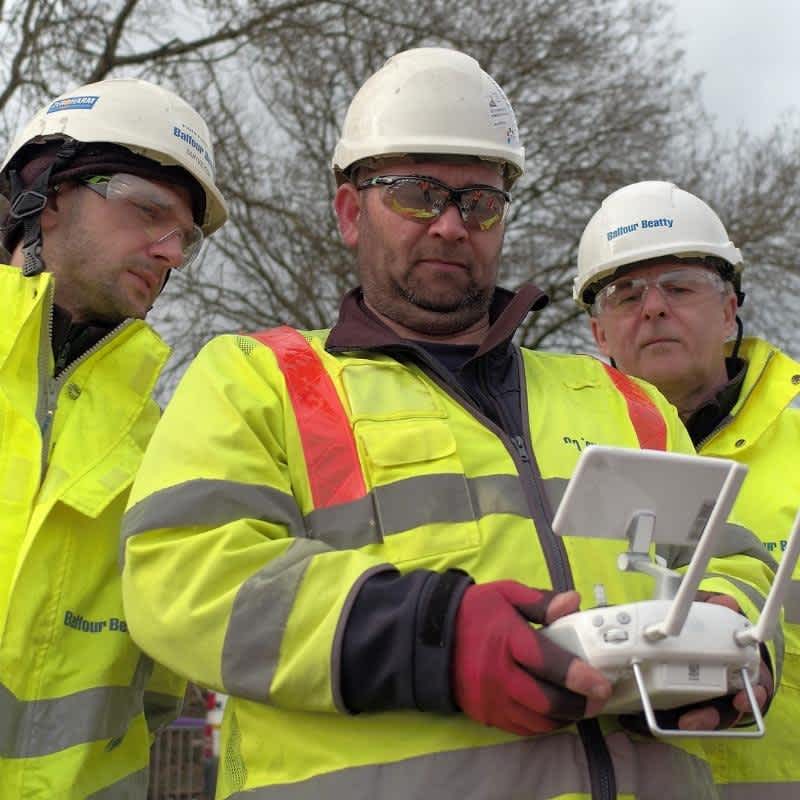
News
Published on 2 Apr 2019
James Willoughby
Balfour Beatty benefiting from drones on M6 Smart Motorway development
Increased safety, faster data collection and accurate results - Balfour Beatty benefiting from drones, including DJI Phantom 4 RTK, with support from Heliguy. ... Read More

Balfour Beatty is using drones on various construction and infrastructure projects, including deploying UAS on a Smart Motorway development on the M6;
Balfour Beatty has found that drones are a great time saver - collecting data faster, improving efficiency, and enhancing health and safety;
Drones provide aerial views of a jobsite: Great for progress reports, sharing development information and spotting mistakes early;
Drones increase the efficiency of stockpile measurements. According to Balfour Beatty drone pilots, traditional handheld methods could take a surveyor a day, but a drone can collect this data in 15 minutes and a model can be processed in two hours;
Balfour Beatty's drone pilots have described the DJI Phantom 4 RTK as a great piece of kit, stable, reliable and capable of producing accurate results.
Balfour Beatty is reaping the rewards of using drones for construction projects, including work on a multi-million-pound Smart Motorway upgrade in The Midlands - with support from UAV specialist heliguy™.
The international infrastructure group is utilising UAVs, including the DJI Phantom 4 RTK, to enhance safety, increase efficiency, gather data faster, improve asset productivity and gain high-accuracy results.
The company has turned to drone expert heliguy™ as its preferred supplier, with the award-winning North East England UAV firm providing a comprehensive package of equipment and support. Balfour Beatty's drone pilots have praised heliguy™ for its 'industry-recognised expertise, effective communication and wide-ranging services'.
Recently, heliguy™ visited Balfour Beatty on location in The Midlands to find out how the innovative company is benefiting from drone technology, both on its M6 Smart Motorway scheme and on other construction and infrastructure projects.
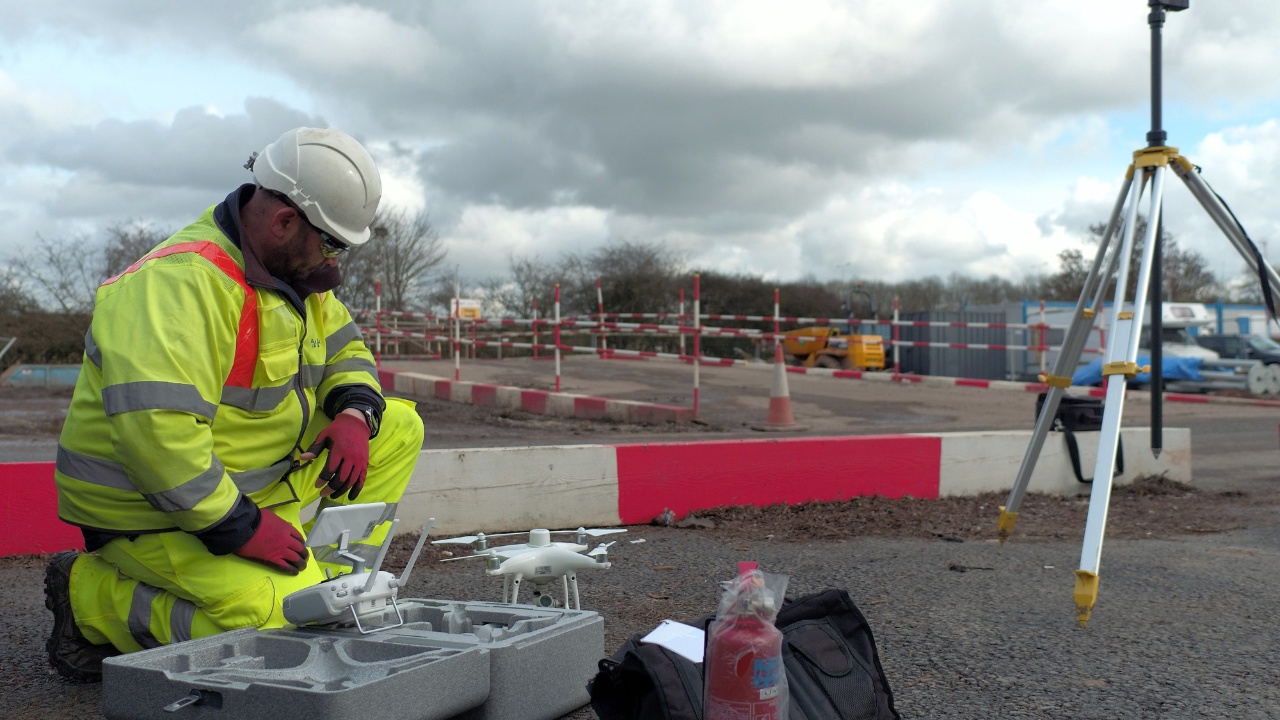
Balfour Beatty's experienced drone pilots have also shared their verdicts on the Phantom 4 RTK, which they have been trialling during the M6 work. So far, they are pleased with its performance and the results it yields.
The Project
In 2015, Balfour Beatty - in partnership with VINCI Construction - was selected to deliver a Smart Motorway package on the M4, M5 and M6, worth up to £607.4million. Among the projects was a 13.6-mile section of the M6, from Junction 2 at Coventry to Junction 4 near Coleshill, at a cost of £212million.
Once the two-year upgrade work is completed, the transformed stretch will increase capacity, reduce congestion and shorten journey times for the thousands of road users who use this network every day.
Extra capacity will be added to the motorways through the conversion of the hard shoulder to a permanent running lane. Electronic signs, operated by a regional control centre, will be installed to manage the flow of traffic in response to driving conditions.
And for Balfour Beatty, drones are playing an important role with this major M6 transformation.
Drones For Construction: Safety and Efficiency
Balfour Beatty is using a number of DJI drones - as supplied by heliguy™ - on the M6 scheme. These include the DJI Phantom 4 RTK and Inspire 1 with X5 camera.
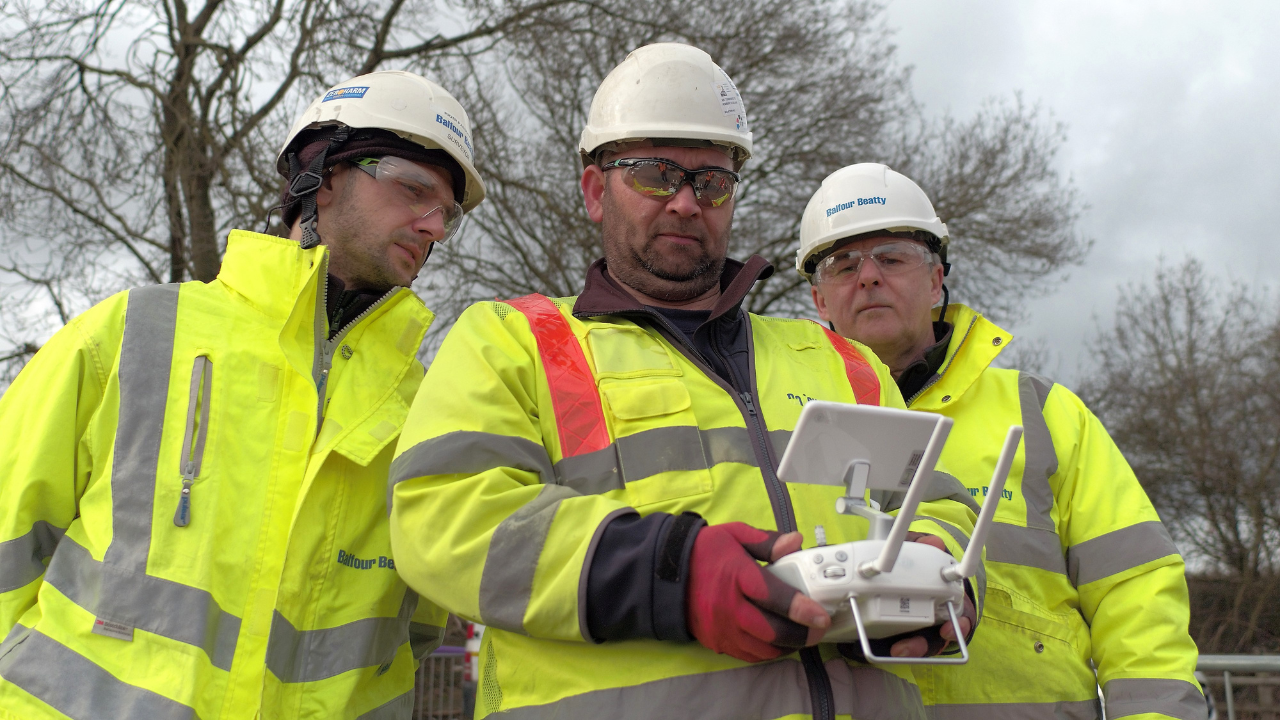
Balfour Beatty has used the drones for a number of reasons, including mapping and capturing aerial shots, and the company has found that this technology has reduced the amount of hours spent onsite, as well as numerous other benefits.
First off, they are proving to be a real time saver, especially when it comes to measuring stockpiles and earthworks at the scheme's recycling depot at Junction 2.
Thanks to drones, the team can fly over the site and digitise the area in a fraction of the time that it would take to use traditional, onsite methods. This leads to faster data collection and increased efficiency.
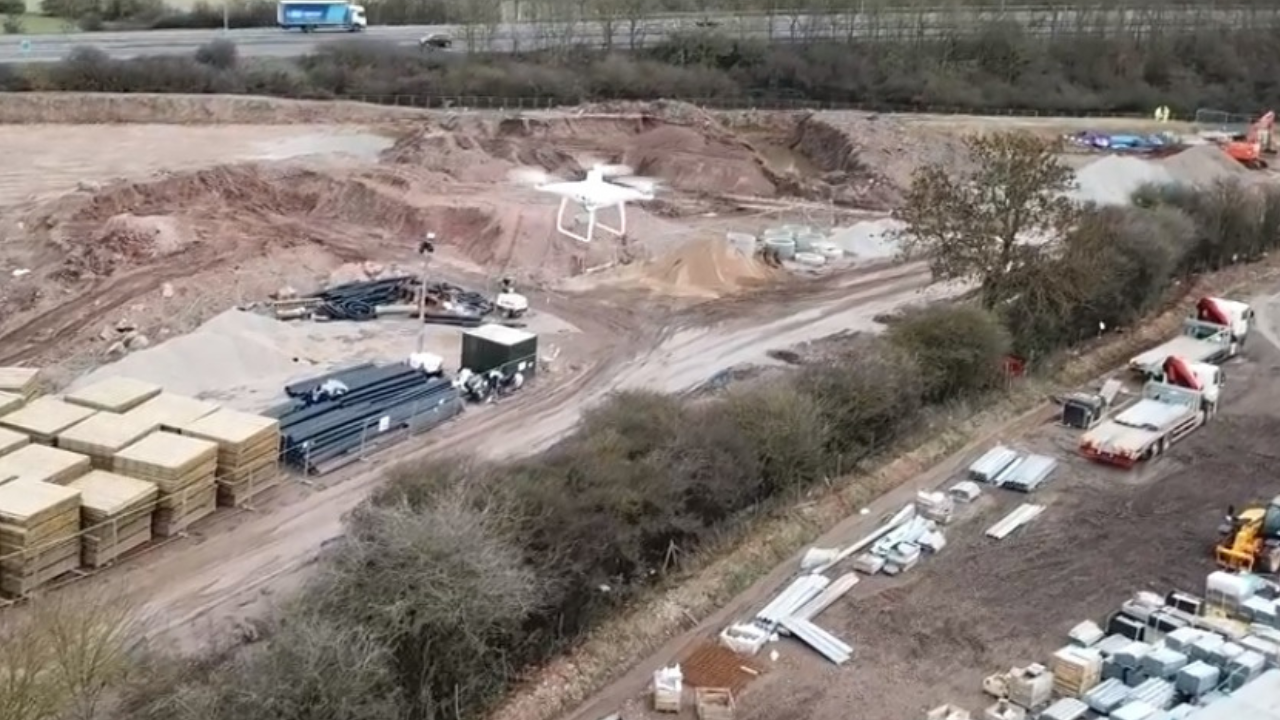
Craig Matthews, Principal UAS Manager for Balfour Beatty, said: "The drones are a great time saver. Take the recycling compound for example. If we were to measure stockpiles with traditional survey tools, it would take a lot longer to measure the site and gather the data, whereas drones enable the team to do fairly rapid measurements of different types of materials and earthworks.
"It would take a surveyor, using traditional handheld equipment, about a day to measure the stockpiles and process the data. But using the drone, we can fly over the compound in 15 minutes and process the model in about two hours."
The ease in which this can be done is staggering. In this video, Craig shows just how quick and simple it is to measure stockpiles using drone technology and computer software.
Not only does this method increase efficiency, but it also dramatically improves safety - which Balfour Beatty says 'is a big plus for us'.
Wayne Hughes, Principal UAS Pilot at Balfour Beatty, said: "Drones make it safer to gain these quantities. To put it simply, drones help unbelievably with health and safety, taking people out of dangerous situations.
"They are fantastic tools, supplementing the work of the surveyors on-site and helping us to get out to places where boots on the ground wouldn't necessarily be the best option.
"It takes people away from places where they could be in harm's way and it means that we haven't got people climbing over stockpiles. Instead, the drones can fly over the site and generate a model afterwards, which we can review in the office."
Using Drones To Monitor Progress On Construction Sites
Drones provide a bird's-eye view of a construction site, giving a complete snapshot of the area and offering useful insights.
Balfour Beatty carries out regular flights across the scheme, allowing the whole team to monitor progress and to support team briefings - as the below video shows.
This is vital for a number of reasons:
Regular progress reports;
Allows staff to monitor and record activities on-site;
Gain a better understanding of what is going on;
Identify any issues or problems a lot easier and quicker.
Take this sequence of images for example, taken from the Balfour Beatty scheme to construct the A45 Daventry development link road, in Northamptonshire. The pictures show how a drone can be used to monitor and record site progress over a period of time.
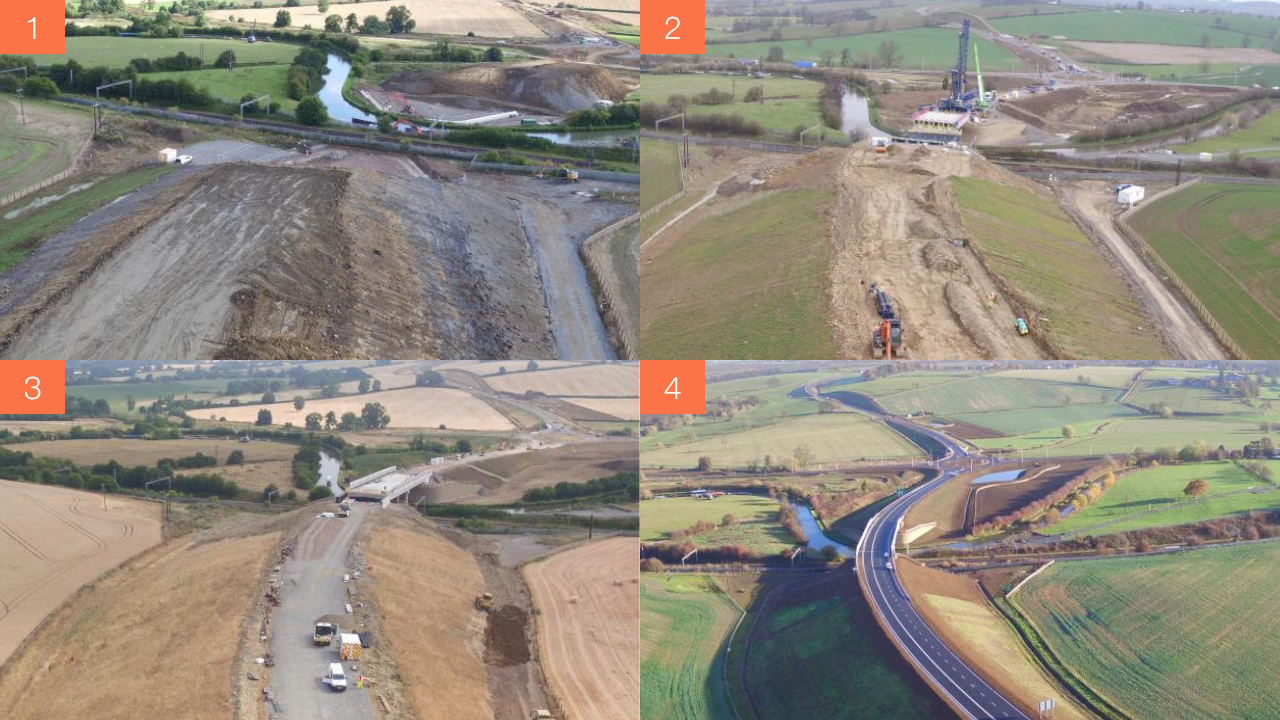
With this in mind, it is fair to say that drones give a unique view, which you would not get from the ground.
Wayne said: "It is very useful. We can see at a moment's notice where we are with the project and we can demonstrate that to the customer.
"It means that the team can be aware of what is going on without having to go out to the site and you can reach areas that you can't otherwise necessarily get to because of health and safety.
"Regular footage from the drone provides a video log for the duration of the scheme. It allows us to monitor and review progress and we can refer to a particular time frame anywhere within the life cycle of the project.
"We get to see the progress as it is happening and there's no questions - the footage captured from the drones says this is where we were at this stage or that stage, and this is where we are now. This is beneficial for the customer, stakeholders and the staff."
Reliable, Stable and Less Ground Control Points Needed: Balfour Beatty's Verdict on the DJI Phantom 4 RTK
As part of the scheme, Balfour Beatty has been trialing the Phantom 4 RTK - which was provided by heliguy™.
The mapping drone is designed to use RTK processing to produce highly accurate aerial maps.
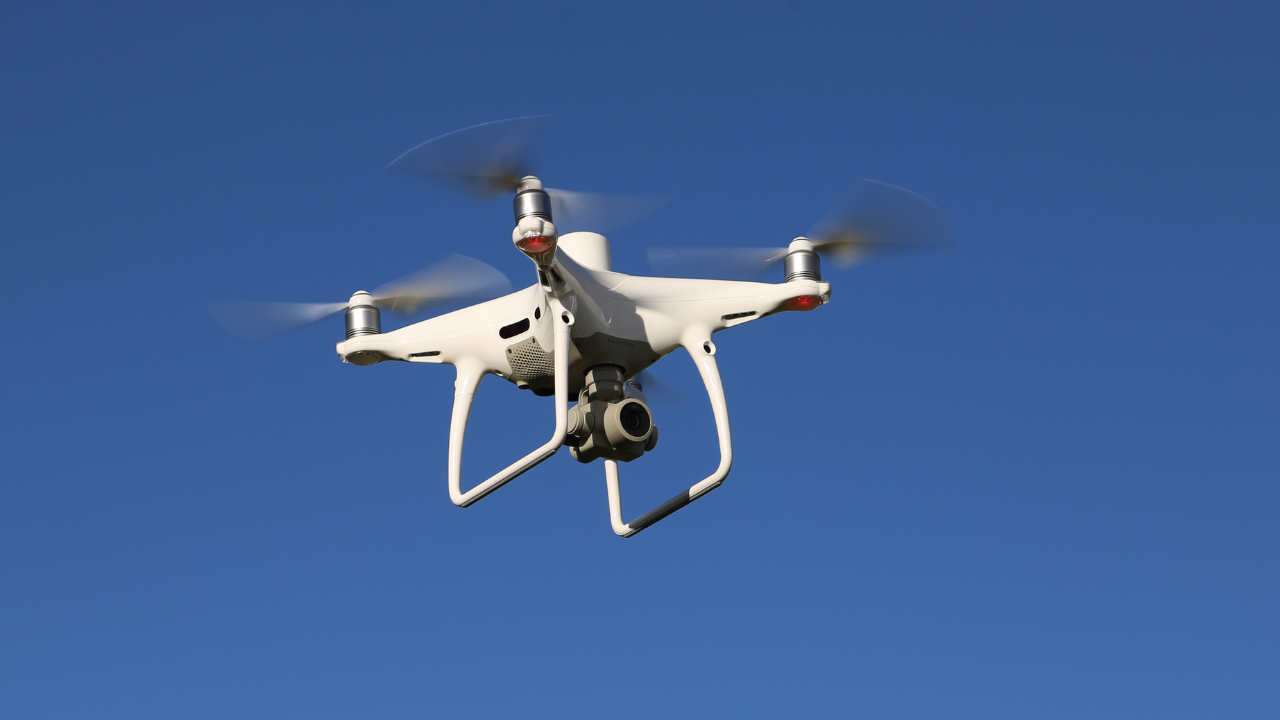
Wayne said: "The RTK is very good. It provides greater flight safety due to the stability it offers and provides more accurate ground-sensor data. We have achieved some very encouraging figures."
In addition to the RTK unit, the Phantom 4 RTK also uses a redundant GNSS (Global Navigation Satellite System) module that provides additional flight stability when flying in dense regions with poor RTK signal.
The RTK module is integrated directly with the drone to provide centimetre-level accuracy for stable flight and accurately georeferenced imagery.
A new TimeSync system was added to continually align the flight controller, camera and RTK module – ensuring each photo uses the most accurate metadata and fixes the positioning data to the centre of the CMOS sensor.
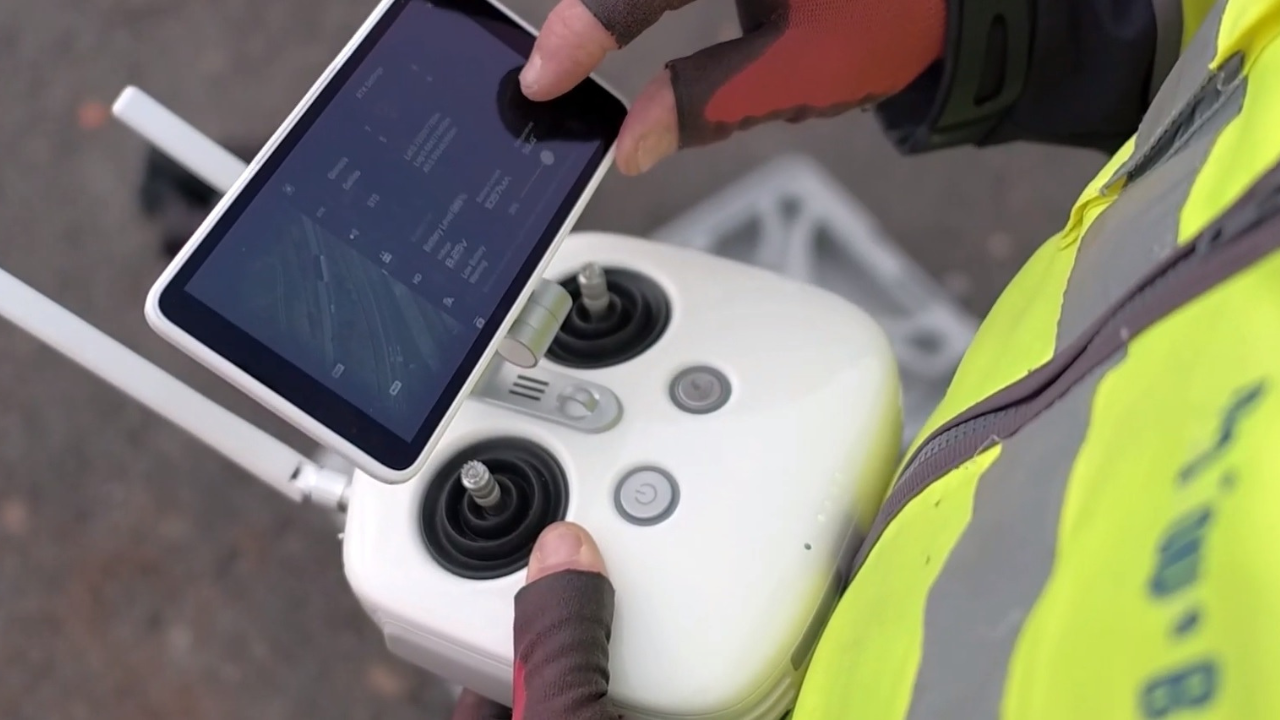
The Phantom 4 RTK also has the ability to connect to the D-RTK 2 Mobile Station, NTRIP (Network Transport of RTCM via Internet Protocol), or store the satellite observation data to be used for PPK.
Craig said: "We have found the Phantom 4 RTK to be a great piece of kit and when it is paired with the base station we are achieving a rock-solid, stable flight and nice accurate models. The battery life is exceptional and it produces high-resolution images."
When it comes to mapping the site, Balfour Beatty has merged the old with the new, complementing the traditional method of laying ground control points with the Phantom 4 RTK to collect the data.
Ground control points - or GCPs as they are known - are marked points on the ground that have a known geographic location. However, laying out a large number of these markers can be time-consuming.
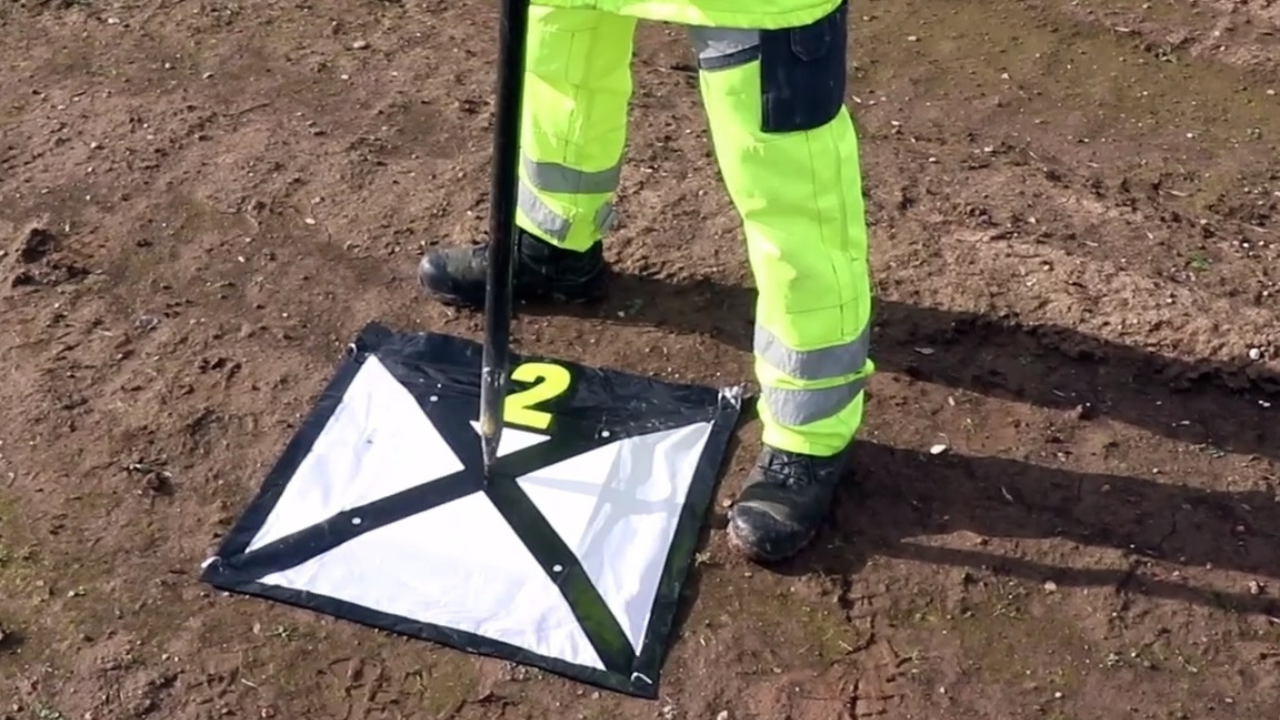
But the Phantom 4 RTK changes all of this. Wayne said: "Thanks to the Phantom 4 RTK, less GCPs need to be put out compared to traditional methods. This reduction makes it safer for the staff who normally put them out."
The Phantom 4 RTK can be used in conjunction with mapping software tool, DJI Terra.
Innovation, Innovation, Innovation - Balfour Beatty's Drone Programme
The smart motorways project isn't Balfour Beatty's first involvement with drones. In fact, with innovation at its core, the company has been using UAVs since 2015 and has 11 pilots in its team.
Balfour Beatty uses drones on a variety of projects, including construction and inspection.
Craig said: "We have had drones in-house for about three years and they have been used for a variety of work, from inspections to monitoring general progress, filming and PR and mapping.
"Balfour Beatty has always tried to stay ahead of the curve in terms of technology and adopting new technology if we can find a suitable place for it in the business. They are a great tool to deliver the results safely, quickly and accurately."
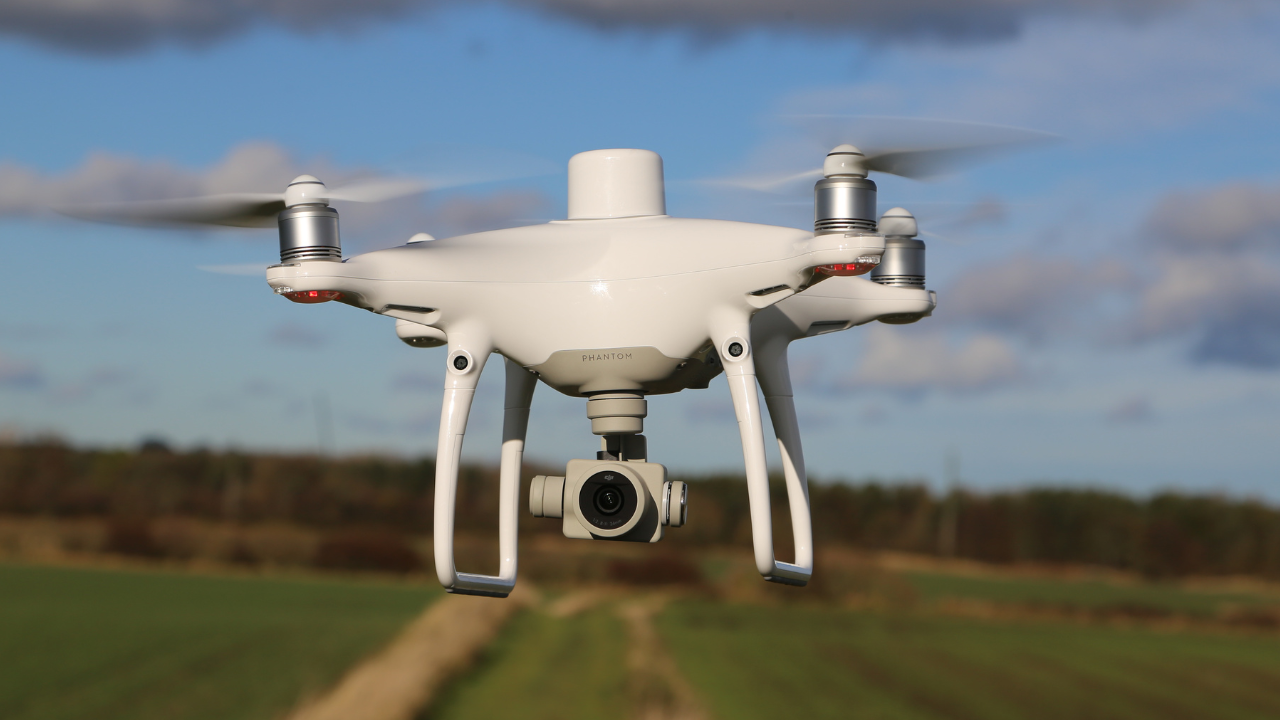
Indeed, drones form a large part of the company's Innovation 2050 vision, which sets out a digital future for the infrastructure industry, based around human-free construction sites.
As part of the innovative strategy, 'drones will be flying overhead, scanning the site constantly, inspecting the work and using the data collected to predict and solve problems before they arise, sending instructions to robotic cranes and diggers and automated builders with no need for human involvement'.
Looking ahead to the potential for Balfour Beatty to extend its drone provision, Craig said: "I imagine that Balfour Beatty's drone programme will keep growing as we find new uses across the business.
"Drones are a no-brainer and I believe that drones will become commonplace on construction sites."
Why did Balfour Beatty choose heliguy™?
So why did world-renowned Balfour Beatty turn to heliguy™ as its drone provider?
Wayne said: "heliguy™ has industry-recognised expertise and offers a fantastic range of DJI products which have supported us in our business.
"heliguy™ offers a good range of support, from the initial query, through the transaction and then advice and technical support after the purchase.
"I wouldn't hesitate to recommend heliguy™ to others in the industry - communication is easy, the advice is there and they will even ship any rental equipment you require straight to site so you can be up and running without delay."
